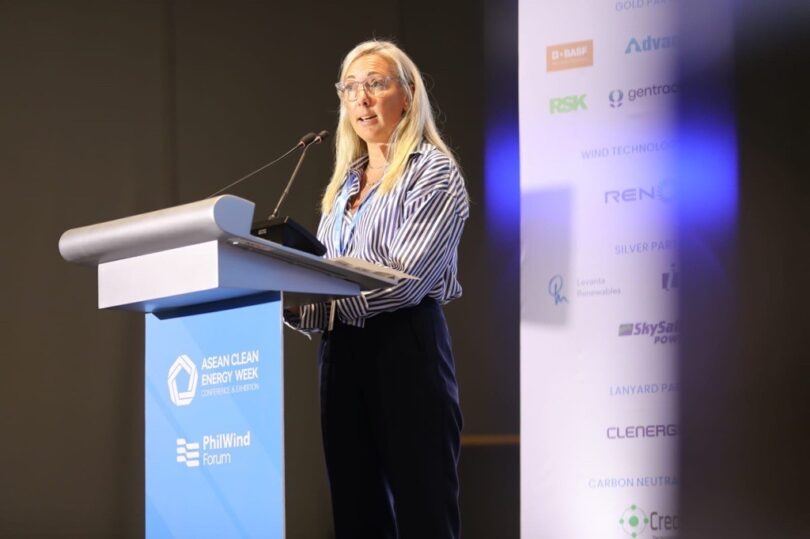RSK’s Renewables team has directed its attention to the Asia-Pacific (APAC) region where governments and industry have become increasingly focused on the sector to help them achieve ambitious environmental and sustainability goals.
The group’s emphasis on this sector and region is in line with the Global Wind Energy Council’s 2023 report, highlighting the huge offshore wind opportunities for APAC. The report predicted that nearly half of all offshore wind installed worldwide in the next 10 years would be in this region.
RSK Renewables Director, Peter Gettinby, and RSK Operations Director for the APAC region, Jessica Finch, have presented and shared their expert opinions at clean energy, renewables and offshore wind conferences in Manila, Taipei, Singapore, Seoul, Busan, Ho Chi Minh City and Hanoi. The RSK Group has more than 200 environmental and engineering companies in 40 countries, including the APAC region.
Pete said: “Last year alone brought important breakthroughs in several markets, including, but not limited to, the APAC region. Bangladesh announced plans for its first ever offshore wind project. Vietnam published the Power Development Plan 8, which sets an offshore wind target of 6 GW by 2030 and 70–91.5 GW by 2050. South Korea granted offshore wind electricity business licences (EBL) for more than 20.8 GW and is developing a ‘dual-track’ system for offshore wind development, and the Philippines is moving towards its first green energy auction for offshore wind.”
He added that the central challenge that governments and industry in the APAC region now face is realising this potential. “By working together, industry and governments can create an environment that fosters innovation, investment and the development of a robust offshore wind supply chain. Over the last few months, we have spoken with developers and government bodies about their ambitious plans and the work that needs to be done to remove any potential barriers.”
Jessica noted that there were still obstacles to achieving ambitious renewable energy goals, with some markets lacking a clear route-to-market strategy and government guidance on policies such as marine spatial planning, leasing, permitting and offtake pricing.
She said: “In the APAC region, offshore wind route-to-market strategies are still in early stages as governments get to grips with complex new processes leading to delays and policy confusion. However, it is anticipated that, given the apparent momentum, there will be a swift implementation of effective market-entry policies.”
Jessica added that, beyond route-to-market, the next challenge was in crafting an industrial policy conducive to offshore wind development, focusing on supply chain, infrastructure and workforce.
“Supply chain bottlenecks, given their lengthy establishment, pose significant hurdles, especially in rapidly developing APAC markets. This necessitates a coordinated approach, though some markets’ local content requirements may intensify supply chain pressures.
“Grid development, a perennial concern in renewable energy, affects offshore wind. Government policies and planning are crucial here. Ports and infrastructure also present challenges that can hinder offshore wind progress.”
Jessica added that the offshore wind sector required a substantial workforce, offering opportunities for job creation and a just transition from redundant jobs. However, it challenged the region with a simultaneous need for skilled labour.
Some key developments for the APAC region:
- The Philippines aims to achieve 6 GW of offshore wind energy capacity by 2030, with a long-term target of reaching a total of 50 GW by 2050.
- Vietnam has pledged $16 billion in its Just Energy Transition Partnership (JETP).
- According to the GWEC, Taiwan has a technical potential of 494 GW of offshore wind, equating to 131 projects. To date, only five projects are fully operational with a capacity of 2.7 GW.
- South Korea is targeting a capacity goal of 12 GW of offshore wind by 2030.
RSK will be attending the Offshore Technology Conference Asia in Kuala Lumpur in February and the Wind Energy Asia 2024 conference in Kaohsiung, Taiwan, in March.







